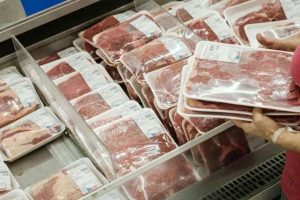PHL pork import forecast downgraded on weak demand

PHILIPPINE pork imports will be lower than initially expected this year due to weak domestic demand and high international prices, the United States Department of Agriculture (USDA) said.
In a report, the USDA estimated Philippine pork imports at 525,000 metric tons (MT), down 12.5% from its previous forecast issued earlier in 2023.
The USDA said the forecast was revised due to the “effects of food inflation, which leaves little purchasing power for pork.”
In December, President Ferdinand R. Marcos, Jr. signed Executive Order No. 10, which extended the reduced most-favored-nation tariff rates on fresh, chilled, or frozen meat at 15% (for shipments within the quota) and 25% (for shipments exceeding the quota).
The USDA forecast domestic pork production at 975,000 MT, exceeding the 2022 level but lower than 1 million MT produced in 2021, following the resurgence of African Swine Fever (ASF) in Luzon and Mindanao.
It cited the recent ASF outbreaks in Cebu province — a major supplier of pork to Metro Manila — and in the Bangsamoro Autonomous Region in Muslim Mindanao.
The National Capital Region is the only region which is ASF-free.
Earlier, the Department of Agriculture (DA) projected a shortfall of pork this month based on its inventory estimates.
According to the USDA, the price of imported pork remained significantly lower than domestic pork prices.
On Wednesday, the DA’s monitoring reports indicated that markets in Metro Manila sold pork belly (liempo) for between P340 and P420 per kilogram while pork shoulder (kasim) commanded P310-P360.
The USDA estimated chicken imports and production to increase 520,000 MT and nearly 1.48 million birds, respectively, citing “shifting demand from pork and eggs.”
The prolonged ASF outbreak and the decline in egg production due to the Highly Pathogenic Avian Influenza (HPAI) has created opportunities for the chicken industry, it said.
“With the egg industry also taking a big hit from HPAI, chicken is the next available less expensive protein source,” the USDA said.
“Small victories were recorded in provinces like South Cotabato, Quezon, and Rizal, which were declared HPAI-free,” it added.
The USDA noted the decline of chicken prices since December, which it attributed to “the cyclonical nature of chicken consumption.”
The price of whole chicken runs between P150 and P200 per kilogram, according to the DA. — Sheldeen Joy Talavera




